
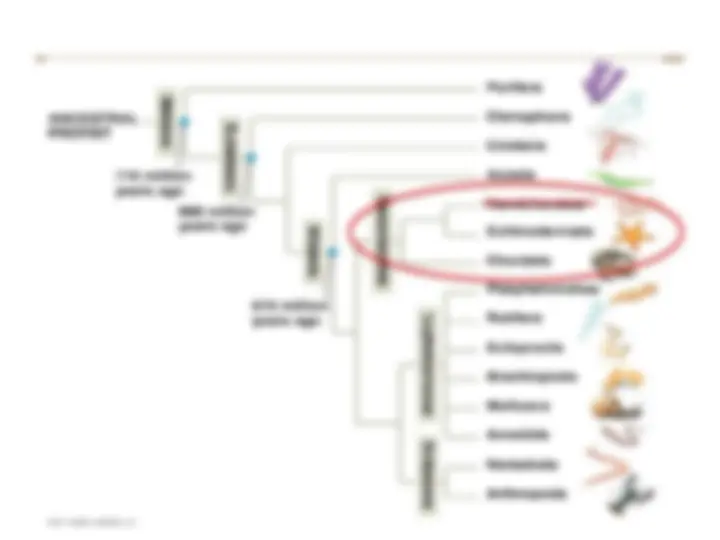

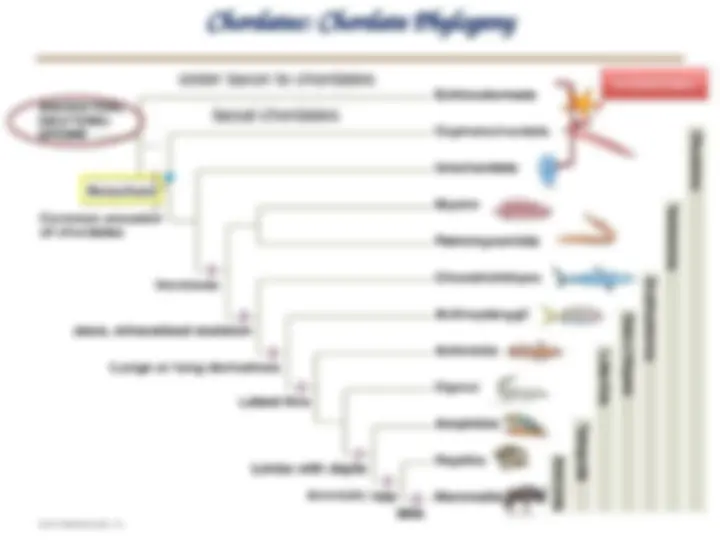
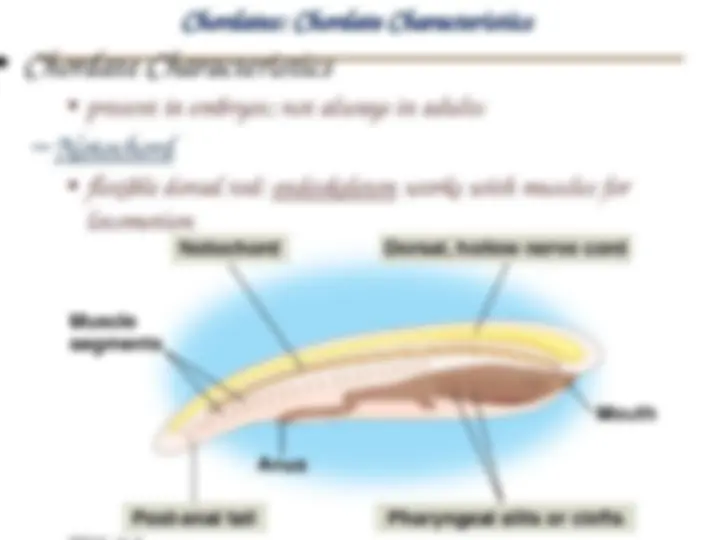
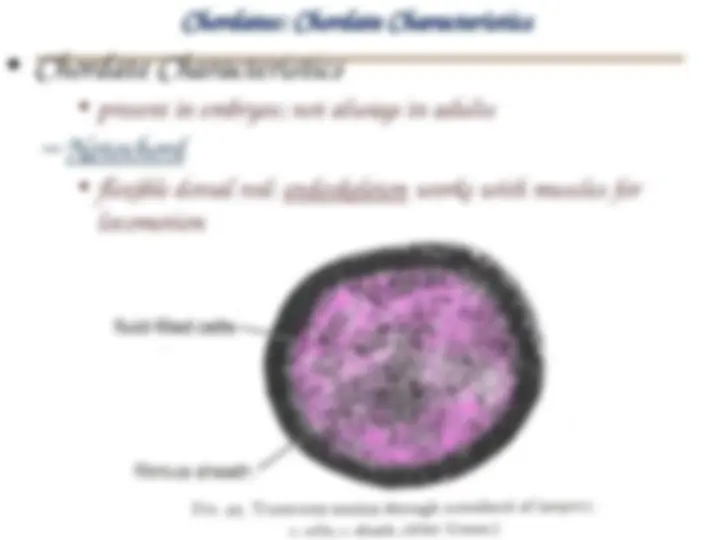
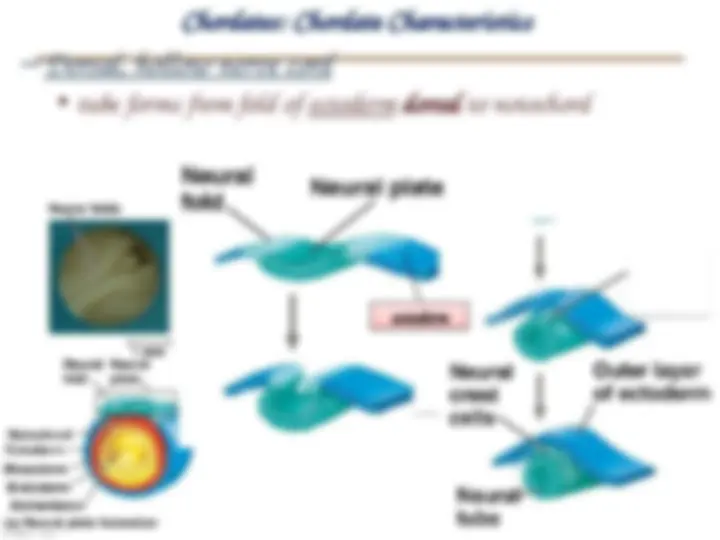
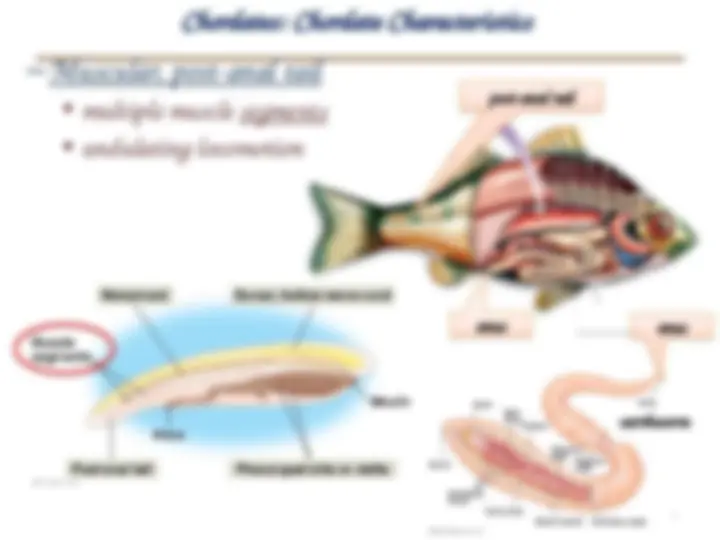
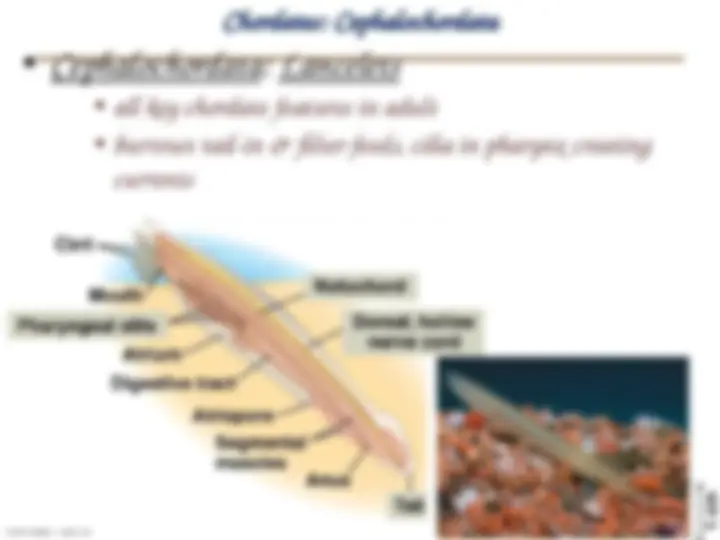
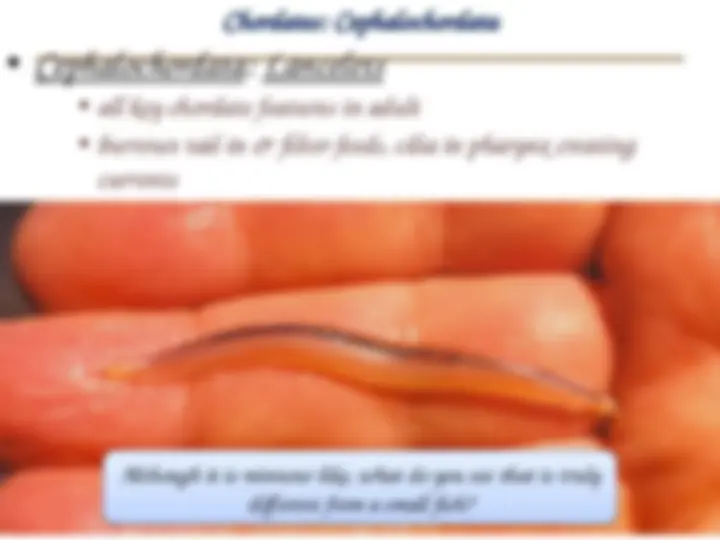
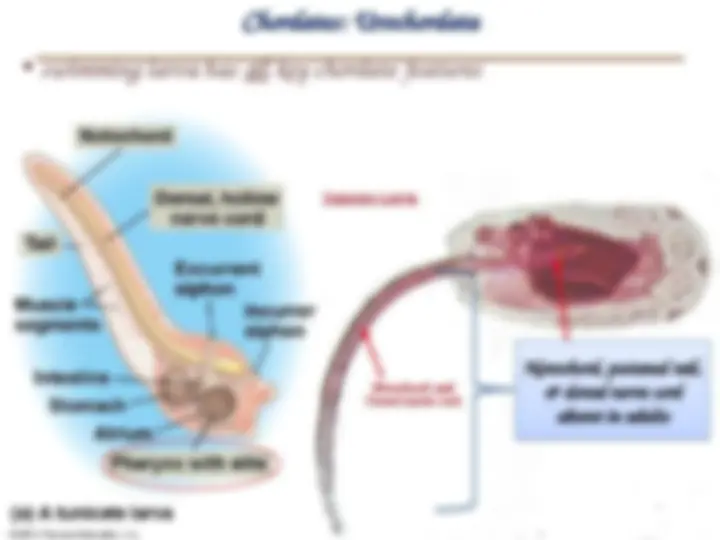


Study with the several resources on Docsity

Earn points by helping other students or get them with a premium plan


Prepare for your exams
Study with the several resources on Docsity

Earn points to download
Earn points by helping other students or get them with a premium plan
Community
Ask the community for help and clear up your study doubts
Discover the best universities in your country according to Docsity users
Free resources
Download our free guides on studying techniques, anxiety management strategies, and thesis advice from Docsity tutors
An outline of the major adaptations and characteristics associated with the origin and diversification of chordates, including the form and function of the major groups of chordates and the adaptive significance of their features in different environments. the chordate characteristics such as the notochord, dorsal nerve cord, pharyngeal slits, and muscular post-anal tail, and discusses the differences between cephalochordates (lancelets) and urochordates (tunicates).
Typology: Lecture notes
1 / 18

This page cannot be seen from the preview
Don't miss anything!











CBJ Ch. 34 - 1
2
Characteristics of Chordates 4
Chordates: Chordate Phylogeny sister taxon to chordates basal chordates invertebrates^ invertebrates
Chordate Characteristics Cephalochordata: Lancelets Urochordata: Tunicates (“sea squirts”)
Chordates: Chordate Characteristics
Chordates: Chordate Characteristics
Chordates: Chordate Characteristics
Chordates: Chordate Characteristics
Chordates: Cephalochordata
Chordates: Urochordata
Chordates: Urochordata